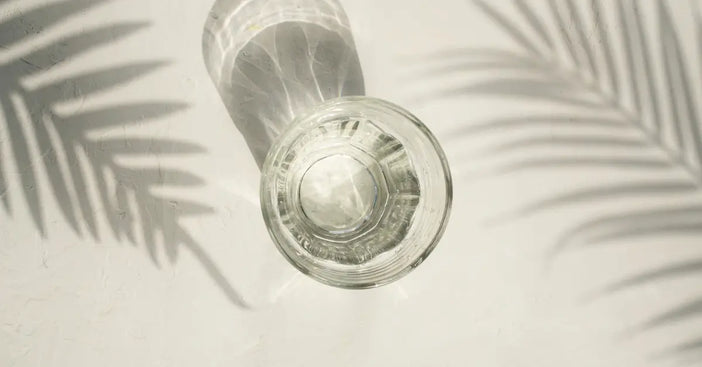Why are Diabetics Thirsty? Causes, Solutions, and Hydration Tips

We all know the age-old advice to drink lots of water and stay hydrated, right? But what if, despite guzzling down more than the recommended two liters a day, you still find yourself feeling incredibly thirsty? It's like no amount of water can truly satisfy that unquenchable thirst you're experiencing.
General health, lifestyle, and age can contribute to how much a person drinks. But for a diabetic, it means something different. No matter how much you drink, the thirst and the feeling of a dry mouth can remain. This creates a vicious cycle of drinking and urinating.
Understanding and managing thirst is important for diabetics and their caregivers, as it can be a sign of fluctuating blood sugar levels and could potentially lead to other health complications.
In this blog, we'll dive into the science behind why thirst is such a prevalent issue for diabetics. We'll also share some practical tips for managing it effectively. Whether you're a diabetic yourself or a caregiver looking to provide the best support, this overview aims to equip you with the knowledge you need. So, let's get started!

Understanding Thirst in Diabetics
We've all felt thirsty at some point, but have you ever stopped to think about the physiology behind that sensation? When your body needs water, your brain sends out signals that make you feel thirsty. It's like your brain's way of saying, "Hey, let's grab a drink!"
Now, let's talk hormones. One key player in the thirst game is vasopressin. This hormone helps regulate how much water your kidneys hold onto and how much they let go. When you're well-hydrated, vasopressin levels are low, and your kidneys get rid of excess water. But when you're dehydrated, vasopressin levels rise, telling your kidneys to hold onto water and signaling your brain to make you feel thirsty.
So, how does diabetes fit into all of this?
Well, diabetes messes with your body's normal hydration regulation in a few ways. High blood sugar levels can cause your kidneys to produce more urine, which leads to dehydration. And when you're dehydrated, those brain signals and hormones like vasopressin kick into high gear, making you feel even thirstier. It's a bit of a vicious cycle, isn't it?
Understanding the physiology of thirst, the role of hormones like vasopressin, and how diabetes specifically interferes with hydration regulation can help diabetics and their caregivers manage this common symptom more effectively.
Is drinking a lot of water good for diabetics?
Excessive thirst and increased urination are common symptoms of diabetes. Increased blood sugar forces your kidneys to work harder than usual to keep your glucose levels in balance. Once your kidneys can’t keep up, your body will try to flush the increased glucose out of the body through urine. This will usually leave you feeling thirsty.
Drinking water helps to rehydrate the blood when the body tries to remove high levels of glucose through urine. That’s why diabetic patients urinate so often. Frequent bathroom breaks can lead to dehydration, leaving you with an excessive thirst for water.
This is your body’s way of telling you to replace the fluids it has just flushed. Increasing the amount of water intake can soothe these symptoms. You can always consult with your doctor for advice on how much water you individually need per day.
Why am I always thirsty even though I drink a lot of water?
Abnormal urination and thirst, unexplained hunger, fatigue, unexplained irritability, including the presence of ketones in the urine, and sometimes even blurred vision can be an early sign of diabetes.
If you’re constantly thirsty, the first step should be to go to a doctor to check if your thirst is a result of diabetes.
The most common symptoms of diabetes are often referred to as:
Three P's of diabetes
- Polydipsia: is a medical term that indicates an intensification of thirst. The person with polydipsia will drink more than 5L of fluid during a day.
- Polyphagia: an increase in appetite;
- Polyuria: repeated urination;
Do diabetics dehydrate faster? Why do people diagnosed with diabetes have an increased risk of dehydration?

Diabetes and dehydration can be a dangerous combination. However, the good news is that few simple steps can stop the vicious cycle of dehydration and high glucose.
Excess blood glucose levels lead to decreased hydration in the body.
- Your body is trying to maintain balance. When fluid disappears from one place, your system is fighting it by trying to replace it using water from your bloodstream.
- When there is less water in your bloodstream the volume of your blood is shrinking and blood sugar will rise. High blood sugar, as you know, leads to insulin resistance and further blood sugar increase.
- High blood sugar causes further dehydration which creates this vicious cycle to repeat.
Diabetic Thirst: What is it and how can you fix it?
According to the advice of The Harvard Medical School Special Health Report, for your body systems to function properly, a person should stick to four to six cups per day. While there may not be a definitive answer to this, here are certain recommendations you can follow.
How can you fix increased thirst?
The amount of necessary water intake varies from person to person. It is enough to simply have access to drinkable water each time you feel thirsty throughout the day. You will need increased amounts of water if you exercise and sweat or if you're outside on a hot day or if you’re eating spicy foods throughout the day or if you are not eating enough water-containing foods.
The thirst reflex isn't always perfect. It's easily mistaken for hunger. Symptoms that overlap can easily lead to confusion when it comes to feeling hunger and thirst. Pay close attention to these feelings when you have them and think about what you have eaten or drank so far during the day.
Also, it is very important to pay attention to the color of your urine. The color of your urine is a true indicator of your body's hydration level. The urine color of a well-hydrated person is pale yellow or clear. If it’s dark yellow, this a good indicator you may need much more water in your system.
To eliminate dehydration, it is recommended to gradually drink fluids throughout the day.
What are the ways to remember to drink water throughout the day?
- Carry a water bottle with you
- Keep a water journal
- Find an alternate beverage
Is water the only option for quenching excessive thirst?
Researchers have found that the amount of water you drink can play a significant role in how your body regulates blood sugar. If you’re looking to quench your thirst, you should be cautious with soda or juice. These drinks are often high in sugar, which may trigger a spike in your blood levels and make your thirst even worse.
You can do your research on what home-made type of diabetic drinks you can consume considering that most of the beverages sold in stores contain high doses of added sugar. But it is always good to tell your doctor and seek his or her advice on it. This is simply because certain diabetic drinks may not suit your diabetic condition. Once you consult with your doctor, you can prepare these drinks at home and stay healthy.
In moderation, you can enjoy caffeinated and alcoholic beverages. But first, you should always choose water, nature’s best. This is simply because water does not have calories, added sugars, and it's the most accessible and necessary liquid for your overall health and wellness.
How to manage diabetes thirst in the long run?
Until the underlying problem of elevated glucose levels is addressed, frequent urination will remain an unsolved issue. That is why treating the frequent urination and thirst problems stemming from diabetes is the best to approach treating the condition holistically.
People with type 1 and type 2 diabetes need to keep a close eye on their lifestyle and respect the routine of personalized doctor treatment and regime. Being optimistic and motivated can make a significant difference. Join our support community. Keep in mind to regularly:
Follow a healthy diet plan
Make sure to include non-starchy vegetables in your diets, such as broccoli, spinach, and green beans, and leafy greens. Include fewer added sugars and refined grains, such as white bread, rice, and pasta with less than 2 grams of fiber per serving. Don't forget to balance out each meal with the proper amount of protein and dairy. An eating plan is usually prescribed by doctors, which is usually low in fat and calories and high in nutritive value.
Stay hydrated
The glucose in your bloodstream is getting more concentrated due to dehydration. Drinking enough water will impact so many aspects of your overall health.
Monitor your blood sugar and insulin injections
As a type 2 diabetes patient, you may need to check your blood sugar levels several times a day. Make sure they don't get high or low and keep a record of it. Take insulin as prescribed. Considering diabetes can affect the function of your whole body, your healthcare providers should also regularly test your:
- Kidney health (urine and blood testing)
- Heart health (blood pressure, weight, and cholesterol level)
- Foot health (foot exams and sensory testing)
- Eye health (eye exams)
Establish an exercise routine
An established exercise routine improves blood glucose control in type 2 diabetes, can reduce cardiovascular risk factors, improve your overall well-being, and help contribute to weight loss. Development of Type 2 diabetes can be prevented and delayed with regular exercise. Managing diabetes and fitness goes hand in hand. You can always try walking, yoga, swimming, or otheraerobic exercises. For more exercise ideas you can always consult with a doctor.
Let us help you take care of your health and wellness.

Type 2 diabetes is manageable, but it's still a lifelong illness. One of the best ways to live a high quality of life as a diabetic is through community support from people on the same journey as you. Join the Winning Type 2 Diabetes Together community on Facebook and connect with thousands of other diabetics around the world, all supporting each other towards living their best lives.



